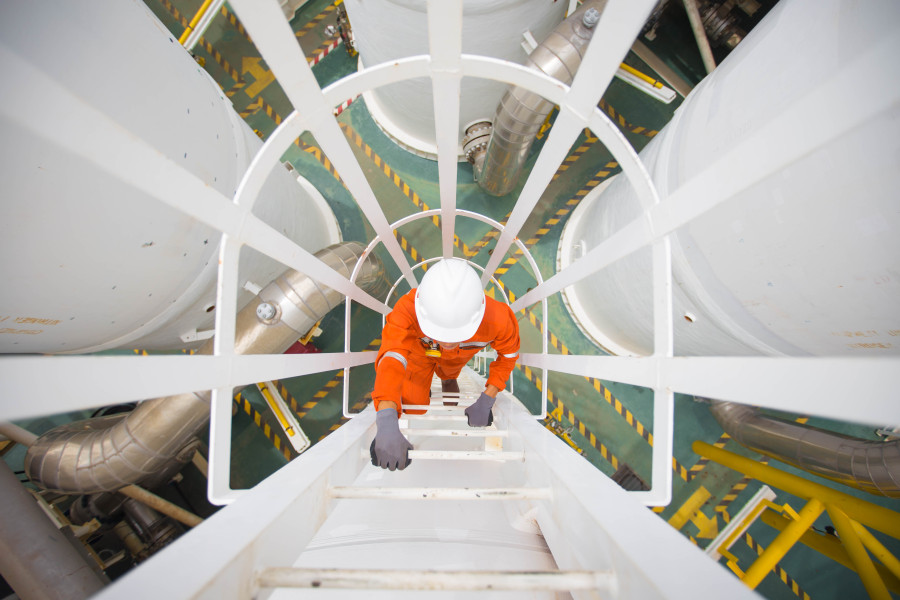Columns
Industrialisation is key to development
The World Bank has described Nepal's peculiar growth as a low-growth, high-remittance trap.
Niraj KC
The annual data published by the government of Nepal shows the economic growth rate in the fiscal year 2018-19 at 14 percent (at current prices). While the growth rate seems encouraging from a macro perspective, the details become blurry as we streamline the scope of analysis. Expectedly, the service sector remains the dominant contributor with approximately 57 percent, followed by agriculture with 27 percent and industry with 16 percent. These figures reveal that Nepal's economic growth has followed an atypical path. Normally, when countries grow, they tend to industrialise and move out of agriculture into manufacturing, which has higher productivity or output per worker, thus generating higher wages. So industrialisation is key for an economy to become middle class and prosperous. Once the economy becomes advanced, industry gives way to the service sector in the same way manufacturing overtakes agriculture.
Nepal's economic growth, in this context, has a perplexing feature as it has jumped from agriculture directly to service without gaining a firm foothold in the middle-income stratum. This obfuscating growth could actually bring worrying consequences. For instance, if anything goes wrong in the Middle East (which is not entirely unlikely given the current geopolitics), a large number of Nepali workers will flock back to the country; and without the stronghold of manufacturing industries, the economy will not be able to sustain the sudden influx of labour, which subsequently could invite myriad economic and social problems.
Unconventional growth
Nepal's unconventional economic growth pattern has caught the attention of international organisations as well. The World Bank recently termed our peculiar growth as a low-growth, high-remittance trap. In this context, by not prioritising the manufacturing sector and simultaneously encouraging domestic labourers to migrate, the government is inadvertently promoting the manufacturing industries of foreign countries as remittance is mostly spent on imported goods. Therefore, the sector which should have been the primary instigator of growth remains in the doldrums. In fact, compared to the previous fiscal year, the output of the manufacturing and construction sectors has increased only by approximately 1 percent, highlighting that the economy is continuously being fuelled by the service sector.
The 2008 global financial crisis was the consequence of a complex service sector. In fact, the crisis revealed the limitations of having an economy with a large and complex financial service sector. In Nepal's case too, banks and financial institutions are becoming more interconnected, and their business harder to understand and regulate. After the encouraging success of the major developed countries including the UK and the US as service-oriented economies, the 2008 financial crisis came as something of a reality check. Immediately, the US and UK governments introduced a policy to rebalance their economy by the process of reindustrialisation.
The then British prime minister David Cameroon initiated policies like March of the Makers under which the UK attempted to rebalance the economy by manufacturing tradable merchandise and selling its wares overseas. The US, despite being the second biggest manufacturer, endorsed similar policies like Made in America. However, over the years, it became apparent that neither the US and nor the UK were successful in reversing the process of deindustrialisation as these rich countries just could not compete with low-cost producers. Emerging economies like China and India started to produce goods cheaply, and information and communication technology also decreased the cost of the supply chain. Yet, the US is still aggressively pursuing a reindustrialisation policy.
Long-term solutions
Though the impetus for industrialisation in Nepal is much greater, the government is not willfully and ambitiously pursuing the sector. The authorities regularly clamour about curtailing the current account deficit (notably by imposing high tariffs), but they do not think about creating long-term solutions. Considering a favourable demographic status and relatively low-wage labourers, Nepal is fertile ground to unbridle the growth of industrial engineering.
We often hear claims that the wage rate in Nepal is high; but we need to understand that if the number of unskilled labourers is to decrease sufficiently, as has been the case in Nepal due to rampant out-migration, those engaged in unskilled work should be paid good wages. So with the right incentives, which include encouraging migrant workers to return, foreign companies will come to Nepal, and the success story of one company could open the floodgates of interest. In this context, foreign direct investment can be uniquely tailored to the country’s circumstances. Like special economic zones, the government can endorse ideas like export processing zones where foreign entities can be explicitly geared to promote exports and help in technology transfer. Only such a robust economic policy could probably help Nepal in achieving the ambitious target of becoming a middle-income country by 2030.
***
What do you think?
Dear reader, we’d like to hear from you. We regularly publish letters to the editor on contemporary issues or direct responses to something the Post has recently published. Please send your letters to [email protected] with "Letter to the Editor" in the subject line. Please include your name, location, and a contact address so one of our editors can reach out to you.




 10.12°C Kathmandu
10.12°C Kathmandu















